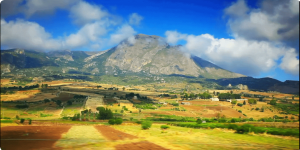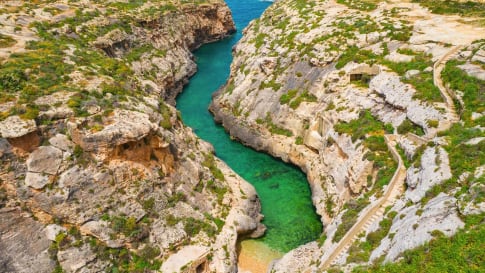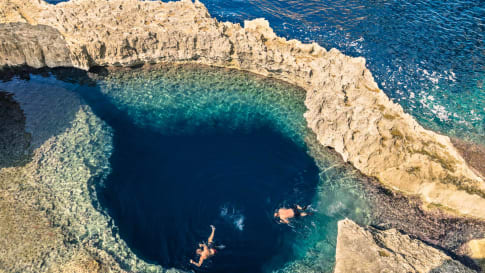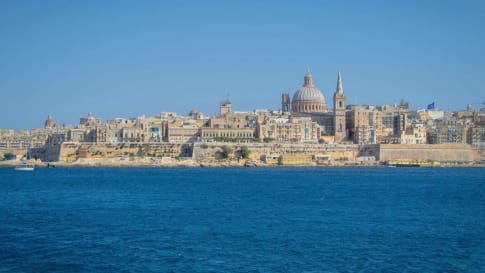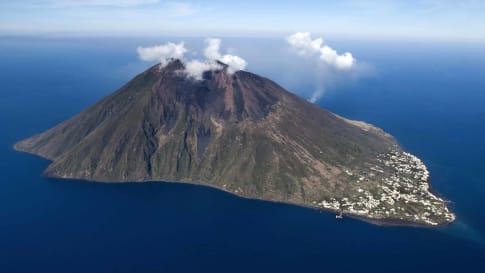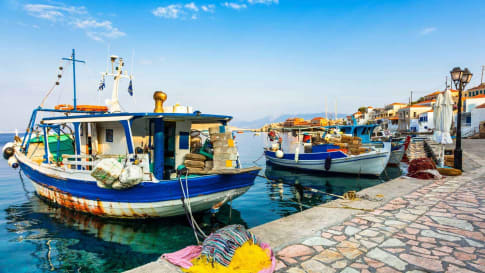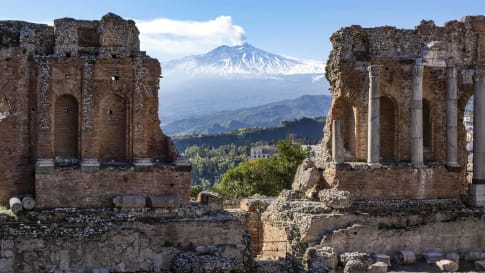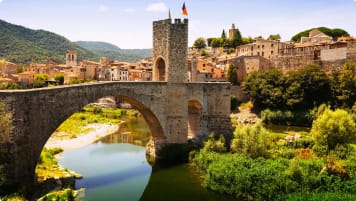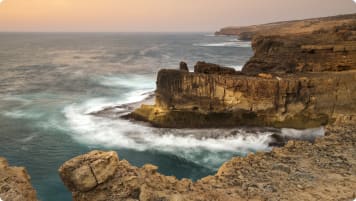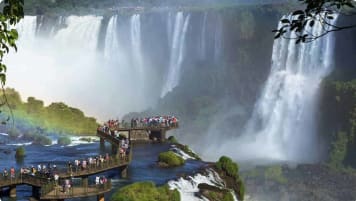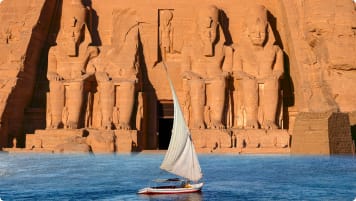Mediterranean Islands Small Group Tour | Malta, Sicily, Sardinia and Corsica
For centuries Malta, Sicily, Sardinia and Corsica held the key to the Mediterranean. We explore ’s the Mediterranean natural beauty, its ancient Roman, and Imperial heritage, its World Heritage Sites, and world famous cities, all with some truly spectacular scenery along the way. This and more is all waiting to be explored on one of Odyssey’s small group tours of the Islands of Mediterranean, designed for the senior traveller, and led by experienced, and enthusiastic like-minded people. This escorted tour of western Mediterranean explores the geography, history, culture and peoples of these 4 islands.
From A$20,750AUD

Highlights
- 1. In Sicily, see the mosaics at the Villa Romana del Casale, the magnificent Baroque town of Noto, and Arab/Norman Palermo
- 2. Sardinia's highlights include the ancient fortified towers of Su Nuraxi and Nora, Sardinia's best preserved Roman city
- 3. In Corsica, see the stunning UNESCO nature reserve of the Golfe de Porto and the Palais Fesch Musee des Beaux Art, home to an important collection of Napoleonic art
- 4. Enjoy wonderful scenery and the warm local hospitality as travel through the islands

Departure Dates
| Departure Date | Price |
|---|---|
| 20 April 2026 Ends 14 May 2026 • 25 days A$20,750 Twin A$23,850 Single Guaranteed | Selected |
| 30 September 2026 Ends 24 October 2026 • 25 days A$20,750 Twin A$23,850 Single Pre-guaranteed | |
| 14 April 2027 Ends 08 May 2027 • 25 days A$21,800 Twin A$25,050 Single Guaranteed | |
| 06 October 2027 Ends 30 October 2027 • 25 days A$21,800 Twin A$25,050 Single Guaranteed |
Mediterranean Islands small group tour.
Odyssey offers easy, convenient, and relaxed escorted small group tours across the Mediterranean islands and beyond. We explore ’s the Mediterranean natural beauty, its ancient Roman, and Imperial heritage, its World Heritage Sites, and world famous cities, all with some truly spectacular scenery along the way.
Odyssey's Mediterranean islands small group tour of Malta, Sicily, Sardinia and Corsica guides you through the region's culture and fascinating history. This fully escorted, 25 day, small group tour for seniors takes you on a fabulous journey around the Western Mediterranean. Beginning in Malta, our escorted tour head to Sicily, Sardinia, before finishing in Corsica, offering extraordinary insights into the history and culture of these Western Mediterranean Islands.
Malta, Sicily, Sardinia and Corsica:
For centuries these four unique islands held the keys to the Mediterranean and in particular they where important for trading within the Mediterranean sea and you can learn more in this article on Malta, Sicily, Sardinia & Corsica. Over centuries, the Phoenicians, Carthaginians, Arabs, Normans, Spanish and French imprinted their distinct culture and architecture on the landscape of the islands. In the 19th century Malta secured the Mediterranean for Britain and helped make it the world's major maritime power. Possession of Sicily brought similar benefits to Rome, as did Corsica for France. Today, Sicily and Sardinia are both very different autonomous regions of Italy. Corsica is a rather reluctant part of France, and Malta is one of the more recent independent members of the European Union. Today, however, their inhabitants still retain their own distinctive characteristics and ways of life.
Itinerary of our Mediterranean Island tour
Each of the four islands visited has its own character, shaped by its history. Odyssey's small group educational tour compares and contrasts the culture, history, geography and peoples of these four unique islands. Throughout the tour you'll experience a number of cultural and historical highlights, from prehistoric settlements to idyllic resort towns.
Malta
Our tour spends five days in Malta and Gozo. Here we visit the city of Rabat, where we explore the grotto of St. Paul and investigate the stories about the antiquities referred to as the two fat ladies. According to Christian tradition, St. Paul lived and preached in these catacombs during three months in Malta in 60 AD. More recently, Malta was ruled by the Knights of St John as a vassal of Sicily. One of the famous knights of St john was the painter Caravaggio. The capital city, Valletta is UNESCO World Heritage listed as a testament to their influence. On a walking tour, we see the Grandmaster's Palace and the Cathedral of St. John. On our last day in Malta, we take a ferry trip to Gozo, the largest of the islands of Malta. Gozo is home to the megalithic Ggantija temples of Xaghra, which are an important prehistoric heritage site.
Sicily
We then depart for Sicily. Our tour of Sicily begins with a walking tour of Noto, recognised as a UNESCO World Heritage Site for its grand baroque architecture. While in Sicily we also learn about Sicilian people and their Kings. We then explore Syracuse, home to ancient Greek ruins and a well-preserved Roman ruins. For more archaeological sites relating to the early history of Sicily, we then visit Agrigento, home to Greek temples. We also visit the Sicilian capital, Palermo, where we make a stop at the Arab-Norman Cappella Palatina, before making a daytrip to the famous cathedral of Monreale. Finally, we travel to Trapani, where we stay for two nights in a hotel. The streets of this medieval town by the sea remain largely untouched from the period of Arab and Norman rule. From Trapani, we make a day trip to the island of Mozia for an archaeological tour, and then head to Erice for a cableway car to enjoy the spectacular views.
Sardinia
Following this, we fly to Cagliari in Sardinia. Sardinia is famous for its beautiful scenery: rocky cliffs, pristine beaches, and a rugged interior. Highlights of our tour of Sardinia include a visit to an Nuragic archaeological site in Barumini (Su Nuraxi Di Barumini), the remains of an ancient civilisation that inhabited the island between 1800 and 500 BCE. We take a walking tour of the medieval town of Alghero and make a trip to Olbia, strikingly located on the Sardinian coast. We enjoy a coastal drive and ferry across to Maddalena Island. This archipelago is famous for its white sandy beaches, emerald sea, and deserted lagoons.
Corsica
Finally, we get the ferry to Corsica. Though famous as the home of Napoleon Bonaparte, Corsica remains one of the least explored islands of the Mediterranean Sea. Our trip to this beautiful island begins with our arrival in Bonifacio, and then travel to Sartene and Propriano. From here we travel to the capital of Corsica, Ajaccio, which we use as a base to visit the Golfe de Porto, one of the most stunning pieces of coast in the entire Mediterranean.
Our destinations are home to some of the world's great cuisines. From the English-inflected cuisine of Malta, through the 'Italian with a twist' found in Sardinia and Sicily, to the unique cuisine of Corsica, we make sure that you are able to experience the local food culture. Each day, we eat breakfast, lunch, or dinner in a local restaurant. We also give you the opportunity to sample local wine and other delicacies.
Odyssey's guided tour of these Western Mediterranean islands is a magnificent holiday for those who wish to learn. Odyssey caters to mature travellers, whether couples or those journeying solo. The tour is fully escorted by an Odyssey Program Leader and professional English speaking local guides who share their expert knowledge of the history and culture of these wonderful islands. A short tour of just Malta & Sicily is also offered, click through to read about this program.
If your interest is in the Amalfi Coast, the cities of Northern Italy, or the spectacular Alps, don't click away! This tour is just one of many Italia tours operated by Odyssey each year.
Articles about Malta, Sicily, Sardinia and Corsica published by Odyssey Traveller:
- Malta: Megalithic temples, ‘fat ladies’, and the Hal Saflieni Hypogeum.
- About Malta, Sicily, Sardinia and Corsica.
- Mediterranean Islands: Malta, Sicily, Sardinia and Corsica.
- The Sicilians and their Kings
- Early History of Sicily: From the Phoenicians to the Arab Conquest (800 BC to the 10th Century)
- Empires Crossing the Mediterranean: 1130-1300
- Life of Caravaggio.
- Caravaggio: Ten Books to Read
- Learning about Caravaggio’s Paintings
- as well as more articles on Italy here
For all the articles Odyssey Traveller has published for mature aged and senior travellers, click through on this link.
External articles to assist you on your visit to Malta, Sicily, Sardinia and Corsica.
- Discover Italy – Sicily
- Sicily’s best beaches: warm waters and stunning scenery
- 48 Hours in Sicily
- Why Noto, Sicily is our Italy destination of the summer
- A Local’s Guide to Palermo
- Lonely Planet: Malta
- The Guardian: Valetta on View – the Maltese capital shows off its cultural side
- History of the Knights of St. John
- Megalithic Temples of Malta
- 48 Hours in Sardinia
- Visit Corsica
- Into Corsica, From Rustic Villages to Stony Cliffs
Gallery
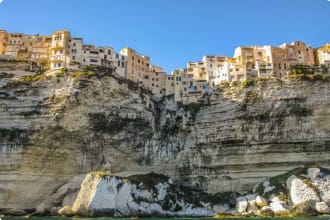
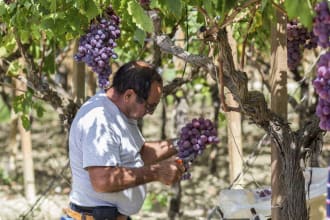
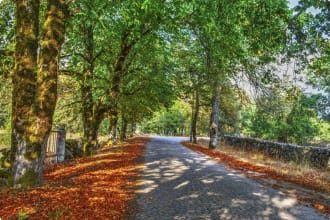
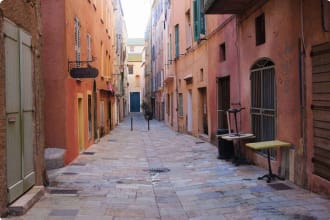

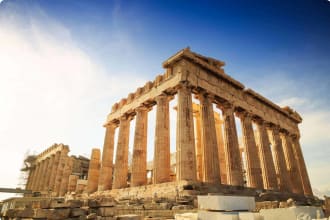

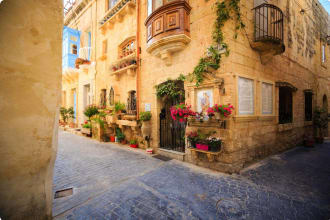
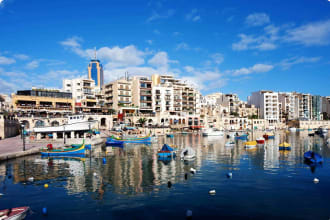
Itinerary
25 days
Day 1: Malta
Accommodation: 5 nights at Waterfront Hotel or similar.
After arriving in Malta, make your way to the hotel. In the evening the group will meet at the hotel for a tour briefing, followed by a welcome dinner at a local restaurant. (D)
Day 2: Malta
Accommodation: Hotel Waterfront or similar.
In the morning we set off for a tour of the main sites around our hotel, commencing at Paola, home of the enigmatic Tarxien Temples. We will also visit Birzebugga, to visit the prehistoric Ghar Dalam cave. Next we will move on to the picturesque Marsaxlokk, famous for its market, to Marsakala where we stop to have lunch.
In the afternoon we transfer to Three Cities, where we have some free time to explore or perhaps take a cruise along the shore (not included, paid locally, approx. EUR 20 per person). We will transfer back to the hotel in the later afternoon. (B,L)
Day 3: Malta
Accommodation: Hotel Waterfront or similar.
Today’s activities centre around Valletta, the capital of Malta. We visit the Upper Barakka Gardens, the Grandmaster’s Palace, St. John’s Co-Cathedral, and the Museum of Archaeology. In the late afternoon we take in the ‘Malta Experience’, an audio-visual attraction set in a purpose-built auditorium overlooking Valletta’s magnificent Grand Harbour.
We return to our hotel for a short rest and later take an evening walk to a local restaurant for dinner. (B,D)
Day 4: Malta
Accommodation: Hotel Waterfront or similar.
We spend today further exploring the island, We learn about Malta’s natural and cultural heritage, strategic Mediterranean importance, centuries-old fortifications, settlements, and religious sites. Typical of the islands of the Mediterranean, Malta has played host to waves of several great civilisations including the Phoenicians, Carthaginians, Byzantines, Arabs, Normans, and the Spanish. The Knights of the Order of Saint John of Jerusalem, also known as the Knights of St John, were Malta’s Masters from 1530 to 1798, when Napoleon’s French forces invaded. Then, in 1800, the British assumed control until Malta was granted independence in 1964. The island and its people were awarded the George Cross for their bravery during World War II.
We then enjoy a full-day tour of local sites, starting with the ancient fortified city of Mdina where we enjoy a walking tour and stop to view the Cathedral. We visit Mosta to see the Mosta Rotunda, then travel to Rabat for lunch at a local restaurant.
In the afternoon we explore St. Paul’s Church and Grotto, and St. Paul’s Catacombs, then make our way back to our hotel and the remainder of the day is at leisure. (B,L)
Day 5: Malta
Accommodation: Hotel Waterfront or similar.
This morning we’ll take a morning ferry ride across to Gozo, Malta’s second largest island, where we have a full day island tour. We visit the citadel at Victoria and the coastal village of Xlendi, which is still guarded over by a 17th century tower built by the Knights of St John. Following lunch, we will travel up the western coast of Gozo to visit Dwejra. Here we will take a boat ride to Fungus Rock, then on to the Ta Pinu basilica in Gharb, followed by a tour of the megalithic Ggantija Temples in Xaghra. In the evening we’ll return via ferry and coach to our hotel. We have dinner at our hotel this evening. (B,L,D)
Day 6: Syracuse, Sicily
Accommodation: 2 nights at Mercure Siracusa Prometeo or similar
This morning begins with an early morning ferry across to Pozzallo in Sicily. Here we join our coach and continue to the UNESCO world heritage town of Noto, the finest Baroque town in Sicily, home to sights like the San Francesco Church, Monastery of Santa Chiara and Palazzo Ducezio. We have free time for lunch, and continue on to Syracuse.
The remainder of the day in Syracuse is free to relax or explore on your own until we meet as a group again for dinner at the hotel. (B,D)
Day 7: Syracuse, Sicily
Accommodation: Hotel Mercure Siracusa Prometeo or similar
Today we enjoy a half day tour of Syracuse, where a visit to the Neapolis Archaeological Park will be followed by a trip to Ara di Ierone, the Great Altar of Syracuse, a monumental grand altar in the ancient quarter of Neapolis.
In the evening we attend a traditional “puppet theatre” (Opera dei Pupi – Sicilian marionette show) and then return to our hotel. (B)
Day 8: Agrigento, Sicily
Accommodation: Overnight at the Colloverde Park Hotel or similar.
Today we depart to Agrigento for a visit to Piazza Armerina and see its famous mosaics during our guided tour of the Villa Romana del Casale, a large Roman Villa situated in a rural setting, and famous for its mosaics which date to the early 4th century AD.
Later we transfer to our hotel and the evening is free to explore the town on your own. (B)
Day 9: Trapani, Sicily
Accommodation: 2 nights at Hotel Room of Andrea or similar
In the morning we tour Agrigento and visit the Valley of the Temples, one of the most outstanding examples of Greater Greece art and architecture.
We then depart towards Trapani, with a stop in Segesta, an archaeological site outside Palermo, where we’ll take a guided tour to see the Doric Temple and ancient theatre.
We arrive in Trapani later in the afternoon and the remainder of the afternoon is at leisure. Dinner this evening is at a local restaurant (B,D)
Day 10: Trapani, Sicily
Accommodation: Hotel Room of Andrea or similar
This morning we’ll enjoy a walking tour of Trapani to view its main attractions, we’ll then transfer to San Leonardo for a ferry trip across to the island of Mozia. We’ll visit the main archaeological sites here, including the Whitaker Museum, followed bylunch at a local restaurant.
In the afternoon we Erice where we take the funicular to the medieval eyrie of Erice, to enjoy its sweeping views of the valley and sea.
We then transfer back to our hotel for the evening. (B,L)
Day 11: Palermo, Sicily
Accommodation: Overnight at Hotel Frederico II or similar.
This morning we transfer to Monreale, to visit its cloistered Cathedral followed by Palermo, Sicily’s capital where we overnight.
In Palermo we visit Quattro Canti, the “Theatre of the Sun”, and La Martorana, the city’s most famous medieval church, visit Palazzo dei Normanni and Cappella Palatina and then take a guided tour of Teatro Massimo, Palermo’s magnificent Opera House.
Dinner this evening is at our hotel. (B,D)
Day 12: Cagliari, Sardinia
Accommodation: 3 nights at the Hotel Flora or similar.
Today is a travel day. We transfer to the airport for our flight to Cagliari in Sardinia (currently, there are no direct flights between Sicily and Sardinia, so will travel via one of Italy’s major cities – Rome or Milan).
On arrival in Cagliari we’ll be met and transferred to our hotel. Dinner is included at the hotel this evening. (B,D)
The island of Sardinia is the second largest island of the Mediterranean but remains surprising unexplored. It has rugged mountainous interiors with stunning coastal scenery as well as quaint hilltop towns and pretty fishing ports. Sardinia has a rich Neolithic history and the island still boasts over 7,000 “nuraghi” fortified tower houses from a civilisation which lasted from 1800 to 500BC. Later the island was settled by the Phoenicians, the Romans, the Vandals, the Byzantines, and the Saracens. In the Middle Ages, the island was fought over by the Pisans and Genoese before falling to the Spanish in 1295. It briefly fell to the Austrians in 1713 before the Kingdom of Sardinia was created by Vittorio Amedeo of Savoy in 1718. Sardinia finally became part of the unified Italy in 1861. Many say that Sardinia offers an almost primeval landscape of rocks sculpted by the wind and sea. D.H Lawrence noted that the island was “left outside time and history.”
Day 13: Cagliari, Sardinia
Accommodation: Hotel Flora or similar.
This morning we enjoy a guided tour of Cagliari’s main sights, including the National Archaeological Museum.
We stop at a local restaurant for a group lunch, along with free time to explore the city on your own.
The rest of the day is at leisure. (B,L)
Day 14: Cagliari, Sardinia
Accommodation: Hotel Flora or similar.
Today we explore the archaeological treasures at Nora, Sardinia’s best preserved Roman city. Following lunch at our leisure, we continue on to Capo Spartivento via the scenic coastal road.
The evening is free for you to explore the local restaurants on your own. (B)
Day 15: Fonni, Sardinia
Accommodation: Overnight at the Hotel Cualbu or similar.
This morning we travel to Barumini and take a guided tour of Su Nuraxi, the UNESCO world heritage site of the nuraghe towers. We have some free time for lunch then continue on to Fonni via Nuoro, at the foot of Monte Ortobene.
We arrive in Fonni late afternoon and dinner is at our hotel. (B,D)
Day 16: Olbia, Sardinia
Accommodation: 3 nights at Hotel Panorama or similar.
After breakfast, we depart to Olbia in the morning, we pause along the way to view the Tomb of the Giants (S’Esna e Thomes). After some free time for lunch in Olbia, we’ll met our local guide for a walking tour of the city to see the main sight and later enjoy a group dinner. (B,D)
Day 17: Olbia, Sardinia
Accommodation: Hotel Panorama or similar
We travel by coach to Palau where we take the ferry to Maddalena Island. We explore the island with our local guide. Lunch will be at a local restaurant. Later catch the ferry back and return to Olbia arriving late afternoon. The remainder of the afternoon and evening are free to explore at your own pace. (B,L)
Day 18: Olbia, Sardinia
Accommodation: Hotel Panorama or similar.
Today we enjoy a full day touring northwest Sardinia. From Olbia we head to Alghero, a town still protected by its medieval walls and towers. After a self-guided walk of the town centre, we pause for lunch (own arrangements) and then transfer our tour one of the a local grotto. Later we return to our hotel in Olbia and the remainder of the day is at leisure. (B)
Day 19: Sartene, Corsica
Accommodation: Overnight at Hotel Bartaccia or similar.
This we transfer to the resort town of Santa Teresa di Gallura. Where catch the ferry across to the port of Bonifacio in Corsica. Following our arrival at the beautiful harbour town of Bonifacio we’ll enjoy a guided tour followed by some free time to explore on your own. Later in the afternoon we continue to the town of Propriano where we will overnight. En route we stop at the town of Sartene to walk around the medieval streets of this historic town. Dinner tonight is at our hotel. (B,D)
The island of Corsica is the fourth largest island of the Mediterranean and combines a stunning juxtaposition of mountain and coastal scenery. In the Middle Ages, Corsica was a colony of Pisa and later of Genoa but enjoyed a brief period of independence in the 18th century under the revered leadership of Pasquale Paoli. Therefore, the “sale” of the island by the Genoese to Louis XV of France for 40 million francs in 1769 has been a source of resentment for the islanders ever since. Ironically, the island was the birthplace of perhaps history’s most famous Frenchman, Napoleon Bonaparte, and French and other visitors outnumber the locals approximately 6 to 1 in the busy periods of July and August. For all of this, Corsica remains one of the last unspoiled corners of the Mediterranean: poor, depopulated, beautiful, old-fashioned, and aloof. Despite its history of conflict with France it has now come to an agreement with its dominant, continental neighbour, although there is still some talk of independence from France among the Corsicans.
Day 20: Ajaccio, Corsica
Accommodation: Overnight at Hotel San Carlu Citadelle or similar
Today we explore Propriano before departing to Ajaccio.
En route to Ajaccio, we stop to visit Filitosa’s 4,000 year old, life-size stone warriors. We continue on to Ajaccio and a guided tour including the Palais Fesch Musee des Beaux Arts, then transfer to our hotel. Tonight we make our own arrangements for dinner. (B)
Day 21: Calvi, Corsica
Accommodation: 2 nights at Mariana Hotel or similar
Today we travel along the picturesque and extraordinary Calanque di Piana to the
UNESCO listed Golfe de Porto, considered as one of the most beautiful bays in the
Mediterranean. We’ll have free time to explore and make our own arrangements for
lunch, then continue to the spectacular mountainside city of Calvi, in the late afternoon.
Dinner this evening will be at our hotel. (B,D)
Day 22: Calvi, Corsica
Accommodation: Mariana Hotel or similar
In the morning we enjoy a guided walking tour of Calvi to view the main sights and the Citadelle. We then take the costal train to L’Ile Rousse where we have some free time to explore on our own. Later we meet our coach again and drive back to Calvi via the old villages road, stopping along the way in Pigna and Sant’Antonio.
The remainder of the day is free for you to rest or continue exploring this beautiful town at your own pace
(B)
Day 23: Bastia, Corsica
Accommodation: 2 nights at Hotel Port Toga or similar
Today we drive take a make our way to Corte, with at Bocca di Vezzu viewpoint. In Corte we board Le Petit Train which is the local tourist train travelling across the town allowing us to see all the main sights. We then visit the Museum of Corsican Life and pause for lunch (own arrangements). We return to Bastia with some time to explore the town and later we meet for dinner at a local restaurant. (B,D)
Day 24: Bastia, Corsica
Accommodation: Hotel Port Toga or similar
In the morning we transfer to Saint-Florent, stopping along the way in Cape Corse and explore the pretty villages there with photo stops in Nonza, Pino and Centuri.
In Saint-Florent we enjoy a guided tour of this lovely port town, we then return to Bastia for a guided tour of the town.
After some rest we’ll regroup and walk to a local restaurant for our farewell dinner. (B,D)
Day 25: Bastia, Corsica
The tour concludes today after breakfast. (B)
Tour Notes
- Group size is limited to a maximum of 18 participants.
- There is a short tour option visiting only Malta & Sicily.
Includes / Excludes
What’s included in our Tour
- 24 nights of hotel accommodation.
- 24 breakfasts, 6 lunches, and 13 dinners.
- 1 internal flight and taxes (economy class, luggage restrictions may apply)
- Applicable entry fees and services of local guides.
- Transport and field trips as indicated.
- Touring by comfortable and modern coach.
- Services of a tour leader.
- Ferry services as indicated.
- Service charges and gratuities.
- Detailed tour information booklet.
What’s not included in our Tour
- Return international airfare and departure taxes.
- Comprehensive international travel insurance.
- Items of a personal nature, such as telephone calls and laundry.
- Meals not specified in the itinerary.
Participants must be in excellent health, extremely mobile and live an active lifestyle. Program activities may include up to 6 hours of continuous strenuous, moderate-to-fast paced activities per day on varied terrain.
Book now
Make it a private tour
Easing your journey
Crossing international borders with restrictions
The list of requirements to travel internationally has changed and will continue to change for several years. Odyssey is here to assist you in managing your way through these requirements:
For more information see our Crossing international borders with restrictions page.
Book With Confidence
If less than 30 days before your tour starts you are unable to travel as a result of Government travel restrictions, Odyssey Traveller will assist you with a date change, provide you with a credit or process a refund for your booking less any non-recoverable costs.
See Terms and conditions for details.
Peace of Mind Travel
The safety of our travellers, tour leader, local guide and support staff has always been our top priority and with the new guidelines for public health and safety for keeping safe for destinations around the world, we’ve developed our plan to give you peace of mind when travelling with us.
See Peace of Mind Travel for details.
Reviews
Excellent tour, great tour guide and I enjoyed the company of my travel companions. Barbara H. Apr '24
The tour was extremely informative and educational. Those 4 islands are uniquely different and we would not want to have missed any of them. The quality of your transportation and accommodations was exceptional as well. Larry S. Sep '19
This tour started out very well in Malta, with lots to see and do, and just kept getting better as we progressed through the other islands. It is a beautiful part of the world, with wonderful history and scenery. Pat C. March '19
Sunshine, blue seas and mountains were the backdrop to discovering so much of the history of these islands with a friendly group of fellow travellers. Suzanne W. Sep '18
The trip was well organised and communication was also good. Busy tour giving full educational history. The Odyssey Program leader was absolutely wonderful, I felt very safe particularly as she had both French and Italian and if we were without the guide in the evenings, she was able to communicate with the other person. We had particularly good guides all along the way, but perhaps Maria in Malta was very, very good as it was apparent she really loved showing her country and its history to us. Participant Sep '18
Reading List Download PDF
The Great Sea: A Human History of the Mediterranean
David Abulafia
Connecting Europe, Asia, and Africa, the Mediterranean Sea has been for millennia the place where religions, economies, and political systems met, clashed, influenced and absorbed one another. In this brilliant and expansive book, David Abulafia offers a fresh perspective by focusing on the sea itself: its practical importance for transport and sustenance; its dynamic role in the rise and fall of empires; and the remarkable cast of characters-sailors, merchants, migrants, pirates, pilgrims-who have crossed and re-crossed it.
Ranging from prehistory to the 21st century, The Great Sea is above all a history of human interaction. Interweaving major political and naval developments with the ebb and flow of trade, Abulafia explores how commercial competition in the Mediterranean created both rivalries and partnerships, with merchants acting as intermediaries between cultures, trading goods that were as exotic on one side of the sea as they were commonplace on the other. He stresses the remarkable ability of Mediterranean cultures to uphold the civilising ideal of convivencia, "living together."
Empires of the Sea: The Final Battle for the Mediterranean, 1521-1580
Roger Crowley
In 1521, Suleiman the Magnificent, Muslim ruler of the Ottoman Empire, dispatched an invasion fleet to the Christian island of Rhodes. This would prove to be the opening shot in an epic clash between rival empires and faiths for control of the Mediterranean and the center of the world. In Empires of the Sea, acclaimed historian Roger Crowley has written a thrilling account of this brutal decades-long battle between Christendom and Islam for the soul of Europe, a fast-paced tale of spiraling intensity that ranges from Istanbul to the Gates of Gibraltar. Crowley conjures up a wild cast of pirates, crusaders, and religious warriors struggling for supremacy and survival in a tale of slavery and galley warfare, desperate bravery and utter brutality. Empires of the Sea is a story of extraordinary color and incident, and provides a crucial context for our own clash of civilisations.
The Great Siege: Malta 1565
Ernle Bradford
Suleiman the Magnificent, the most powerful ruler in the world, was determined to conquer Europe. Only one thing stood in his way: a dot of an island in the Mediterranean called Malta, occupied by the Knights of St. John, the cream of the warriors of the Holy Roman Empire. A clash of civilizations the likes of which had not been seen since Persia invaded Greece was shaping up. Determined to capture Malta and use its port to launch operations against Europe, Suleiman sent an armada and an overwhelming army. A few thousand defenders in Fort St. Elmo fought to the last man, enduring cruel hardships. When they captured the fort, the Turks took no prisoners and mutilated the defenders’ bodies. Grand Master La Vallette of the Knights reciprocated by decapitating his Turkish prisoners and using their heads to cannonade the enemy. Then the battle for Malta began in earnest: no quarter asked, none given.
The Knights of Malta
H.J.A Sire
This is the most complete history in any language of the Order of St John, or Knights Hospitaller, successively known as the Knights of Rhodes and of Malta. Founded in eleventh-century Jerusalem, the Order has played an important military, religious and political role over succeeding centuries. H.J.A. Sire not only provides a full narrative account, but describes and illustrates the architectural and artistic legacy of the Knights, from Crusader castles in the Holy Land, to the medieval city of Rhodes, the Maltese capital of Valletta, and manors, churches and fortified villages throughout Europe. These, as well as religious art, portraiture and illuminated manuscripts are copiously illustrated, revealing the wealth, culture and longevity of the Order. This is moreover the first general work to do full justice to the Order's international character by including a detailed account of its European Priories and the role played by the Knights in the history of their respective countries. It includes chapters on Crac des Chevaliers and other Hospitaller castles of the crusading period, on the career of Grand Master Heredia as a statesman and patron of medieval learning, and on the caring traditions of the Order. The chapter on the Navy of the Knights offers the first rigorous study of the Order's strategic naval role in the Mediterranean. The final section describes the resurgence of the Order since Napoleon's conquest of Malta in 1798, and its efforts over two centuries to recover an effective role. It considers the attempt in the 1950s to subject the Order to Vatican control, and its position today, under the first English Grand Master in its history. With its traditional rights of sovereignty widely recognised, and diplomatic relations established with an increasing number of countries, a modernised Order of over ten thousand Knights continues nine centuries of hospitaller work throughout the world.
A Brief History of the Knights Templar
Helen Nicholson
Much has been written about the Knights Templar in recent years, most of it highly speculative and with no historical foundation. Helen Nicholson is a leading specialist in the history of this legendary medieval order and offers here a full account of the knights of the order of the Temple of Solomon, bringing the latest findings to a general audience.
Sicily: Three Thousand Years of Human History
Sandra Benjamin
Tourists, armchair travelers, and historians will all delight in this fluid narrative that can be read straight through, dipped into over time, or used as a reference guide to each period in Sicily’s fascinating tale. Emigration of people from Sicily often overshadows the importance of the people who immigrated to the island through the centuries. These have included several who became Sicily’s rulers, along with Jews, Ligurians, and Albanians. Greeks, Romans, Vandals, Goths, Byzantines, Muslims, Normans, Hohenstaufens, Spaniards, Bourbons, the Savoy Kingdom of Italy and the modern era have all held sway, and left lasting influences on the island’s culture and architecture. Sicily’s character has also been determined by what passed it by: events that affected Europe generally, namely the Crusades and Columbus’s discovery of the Americas, remarkably had little influence on Italy’s most famous island. Maps, biographical notes, suggestions for further reading, a glossary, pronunciation keys, and much more make this unique book as essential as it is enjoyable.
Sicily: A Short History from the Greeks to Cosa Nostra
John Julius Norwich
Critically acclaimed author John Julius Norwich weaves the turbulent story of Sicily into a spellbinding narrative that places the island at the crossroads of world history.
"Sicily," said Goethe, "is the key to everything." It is the largest island in the Mediterranean, the stepping-stone between Europe and Africa, the link between the Latin West and the Greek East. Sicily’s strategic location has tempted Roman emperors, French princes, and Spanish kings. The subsequent struggles to conquer and keep it have played crucial roles in the rise and fall of the world’s most powerful dynasties.
Yet Sicily has often been little more than a footnote in books about other empires. John Julius Norwich’s engrossing narrative is the first to knit together all of the colourful strands of Sicilian history into a single comprehensive study. Here is a vivid, erudite, page-turning chronicle of an island and the remarkable kings, queens, and tyrants who fought to rule it. From its beginnings as a Greek city-state to its emergence as a multicultural trading hub during the Crusades, from the rebellion against Italian unification to the rise of the Mafia, the story of Sicily is rich with extraordinary moments and dramatic characters. Writing with his customary deftness and humour, Norwich outlines the surprising influence Sicily has had on world history—the Romans’ fascination with Greek civilization dates back to their sack of Sicily—and tells the story of one of the world’s most kaleidoscopic cultures in a galvanizing, contemporary way.
Reeds in the Wind
Grazia Deledda
The rugged landscape of Baronia on Sardinia sets the scene for this novel of crime, guilt and retribution. This novel presents the story of the Pintor sisters - from a family of noble landowners now in decline - their nephew Giacinto, and their servant Efix, who is trying to make up for a mysterious sin committed many years before. Around, below, and inside them the raging Mediterranean storms, the jagged mountains, the murmuring forests, and the gushing springs form a Greek chorus of witness to the tragic drama of this unforgiving land. Deledda tells her story with her characteristic love of the natural landscape and fascination with the folk culture of the island, with details about the famous religious festivals held in mountain encampments and the lore of the "dark beings who populate the Sardinian night, the fairies who live in rocks and caves, and the sprites with seven red caps who bother sleep."
Sea and Sardinia
D.H. Lawrence
David Herbert Richards Lawrence (1885-1930) was an English novelist, playwright, essayist, poet, literary critic and painter who published under the name D. H. Lawrence. He is valued by many as a visionary thinker and significant representative of modernism, as well as one of the finest writers in English literature. After the traumatic experience of World War I, Lawrence began what he termed his "savage pilgrimage," a time of voluntary exile, where he escaped with his wife from England and spent the remainder of his life travelling. In 1921, Lawrence joined the British literary tradition of writing a travelogue. He and his wife, Frieda, embarked on a journey to Sardinia for its promise of unspoiled primitiveness and lack of many tourists. "Sea and Sardinia" records Lawrence's voyage to Sardinia, revealing his response to the new landscape and inhabitants of this part of the Mediterranean. It is also a self-revealing journal in which Lawrence's passions, rages, and perspectives get frequent work-out.
Granite Island: A Portrait of Corsica
Dorothy Carrington
"Get away from here before you're completely bewitched and enslaved..." Dorothy Carrington was told, while sitting in a fisherman's cafe at the magically quiet midday hour. But enslaved she was. Granite Island, much more than a travel book, grew out of years spent in Corsica and is an incomparably vivid and delightful portrait. For the first time Corsica is brought to light as a vital element in Europe: a highly individualistic island culture whose people have nurtured their love of freedom and political justice, as well as their pride, hospitality and poetry.
Napoleon The Great
Andrew Roberts
From Andrew Roberts, author of the Sunday Times bestseller "The Storm of War", this is the definitive modern biography of Napoleon. Napoleon Bonaparte lived one of the most extraordinary of all human lives. In the space of just twenty years, from October 1795 when as a young artillery captain he cleared the streets of Paris of insurrectionists, to his final defeat at the (horribly mismanaged) battle of Waterloo in June 1815, Napoleon transformed France and Europe. After seizing power in a coup d'état he ended the corruption and incompetence into which the Revolution had descended. In a series of dazzling battles he reinvented the art of warfare; in peace, he completely remade the laws of France, modernised her systems of education and administration, and presided over a flourishing of the beautiful 'Empire style' in the arts.
The impossibility of defeating his most persistent enemy, Great Britain, led him to make draining and ultimately fatal expeditions into Spain and Russia, where half a million Frenchmen died and his Empire began to unravel. More than any other modern biographer, Andrew Roberts conveys Napoleon's tremendous energy, both physical and intellectual, and the attractiveness of his personality, even to his enemies. He has walked 53 of Napoleon's 60 battlefields, and has absorbed the gigantic new French edition of Napoleon's letters, which allows a complete re-evaluation of this exceptional man. He overturns many received opinions, including the myth of a great romance with Josephine: she took a lover immediately after their marriage, and, as Roberts shows, he had three times as many mistresses as he acknowledged.
Of the climactic Battle of Leipzig in 1813, as the fighting closed around them, a French sergeant-major wrote, 'No-one who has not experienced it can have any idea of the enthusiasm that burst forth among the half-starved, exhausted soldiers when the Emperor was there in person. If all were demoralised and he appeared, his presence was like an electric shock. All shouted "Vive l'Empereur!" and everyone charged blindly into the fire.' The reader of this biography will understand why this was so.
Sicily: A Short History, from the Greeks to Cosa Nostra
John Julius Norwich
Sicily is the key to everything' Johann Wolfgang von Goethe
The author of the classic book on Venice turns his sights to Sicily in this beautiful book full of maps and colour photographs.
'I discovered Sicily almost by mistake . . .We drove as far as Naples, then put the car on the night ferry to Palermo. There was a degree of excitement in the early hours when we passed Stromboli, emitting a rich glow every half-minute or so like an ogre puffing on an immense cigar; and a few hours later, in the early morning sunshine, we sailed into the Conca d'Oro, the Golden Shell, in which the city lies. Apart from the beauty of the setting, I remember being instantly struck by a change in atmosphere. The Strait of Messina is only a couple of miles across and the island is politically part of Italy; yet somehow one feels that one has entered a different world . . . This book is, among other things, an attempt to analyse why this should be.'
The stepping stone between Europe and Africa, the gateway between the East and the West, at once a stronghold, clearing-house and observation post, Sicily has been invaded and fought over by Phoenicians and Greeks, Carthaginians and Romans, Goths and Byzantines, Arabs and Normans, Germans, Spaniards and the French for thousands of years. It has belonged to them all - and yet has properly been part of none.
John Julius Norwich was inspired to become a writer by his first visit in 1961 and this book is the result of a fascination that has lasted over half a century. In tracing its dark story, he attempts to explain the enigma that lies at the heart of the Mediterranean's largest island.
This vivid short history covers everything from erupting volcanoes to the assassination of Byzantine emperors, from Nelson's affair with Emma Hamilton to Garibaldi and the rise of the Mafia. Taking in the key buildings and towns, and packed with fascinating stories and unforgettable characters, Sicily is the book he was born to write.
Midnight in Sicily
Robb Peter
A journey into the heart of Sicily, using art, food, history and literature to shed light on southern Italy's legacy of political corruption and violent crime. The book takes as its starting point the ongoing trial of seven-times Prime Minister Giulio Andreotti.
Mediterranean Islands Small Group Tour | Malta, Sicily, Sardinia and Corsica
